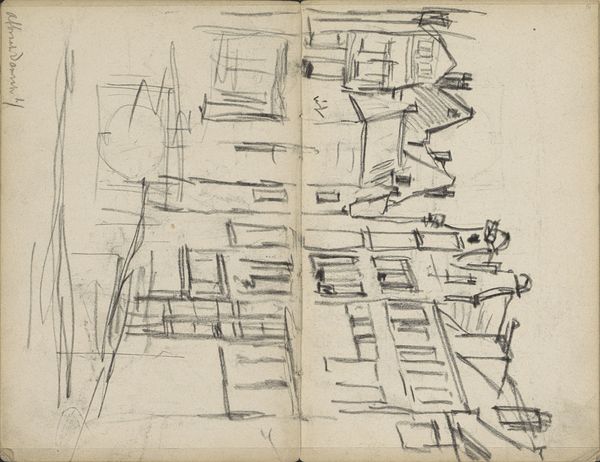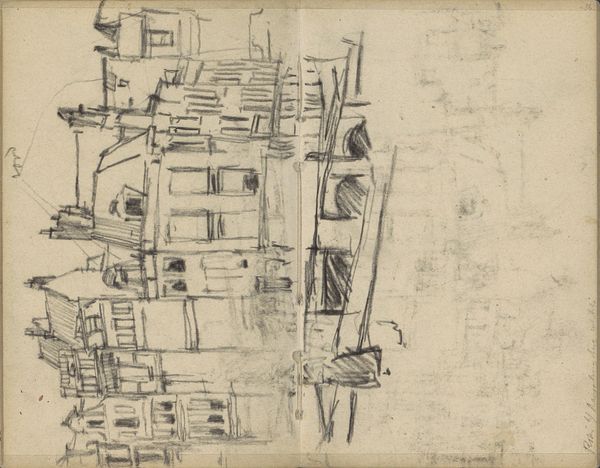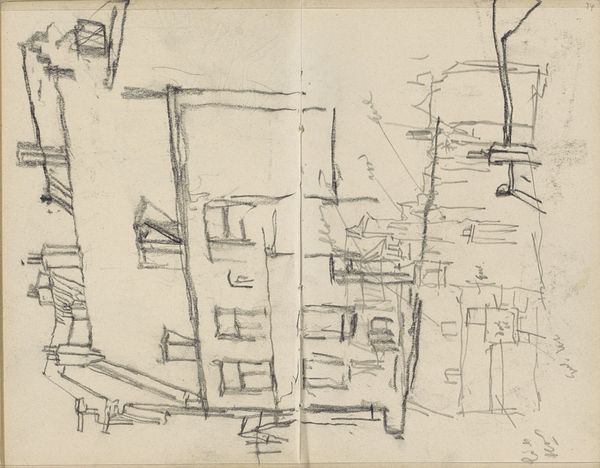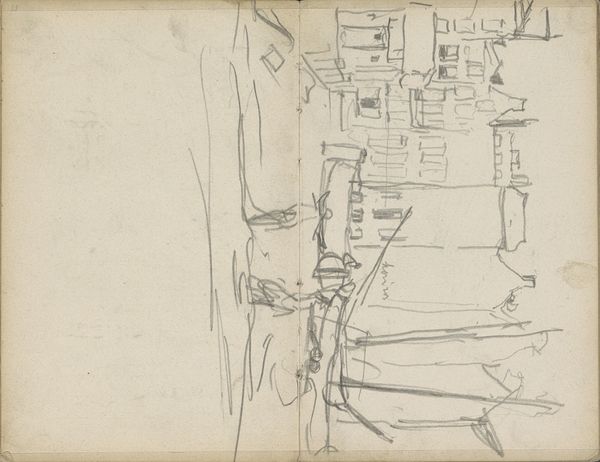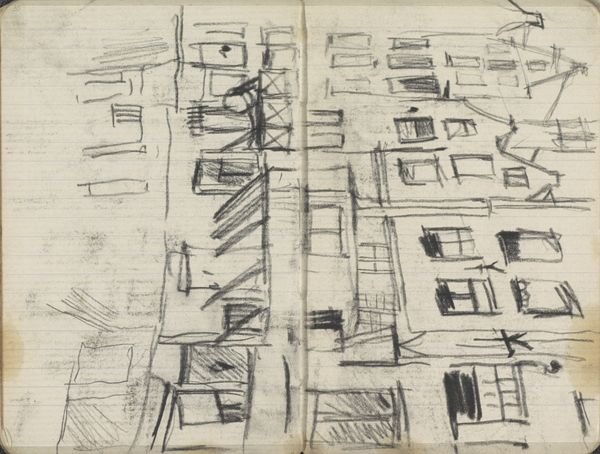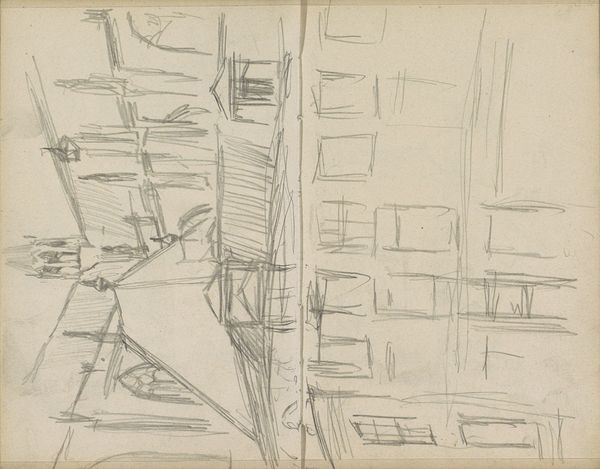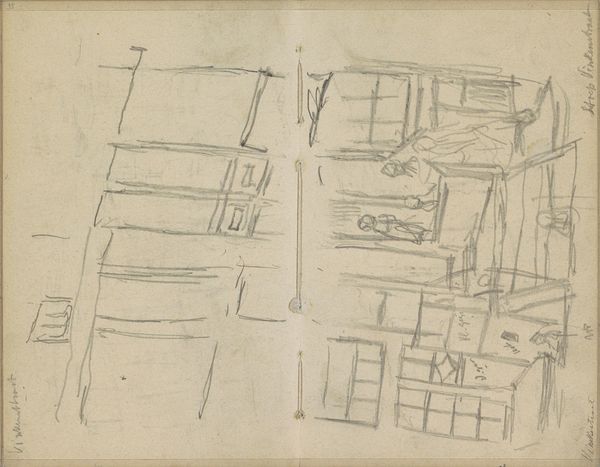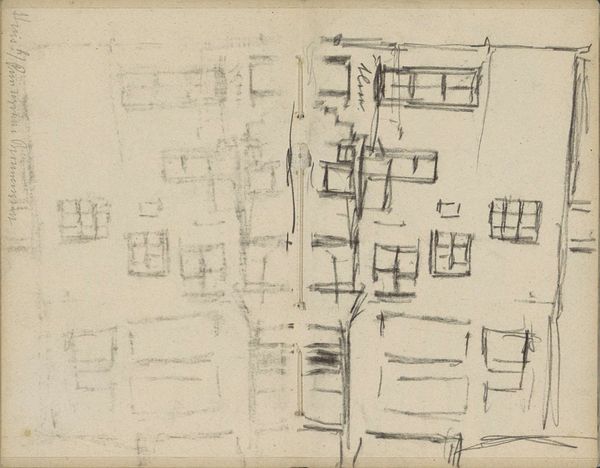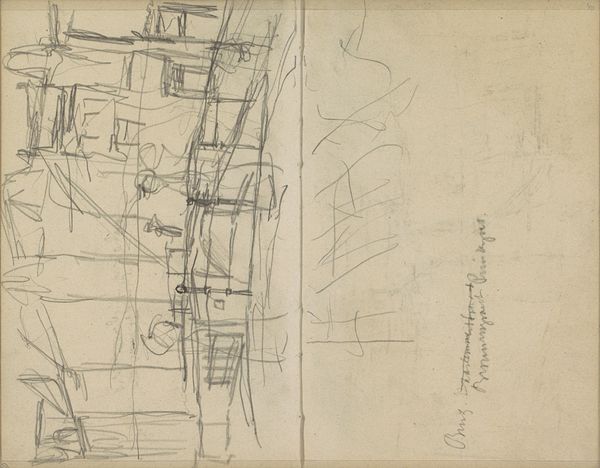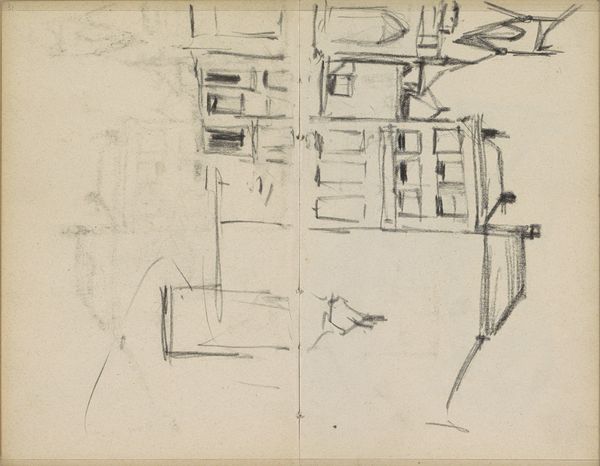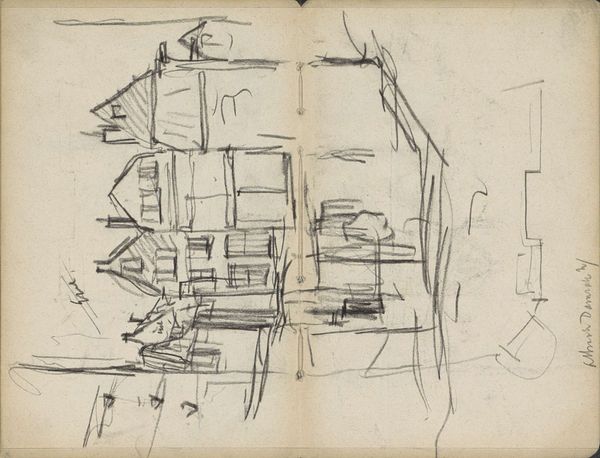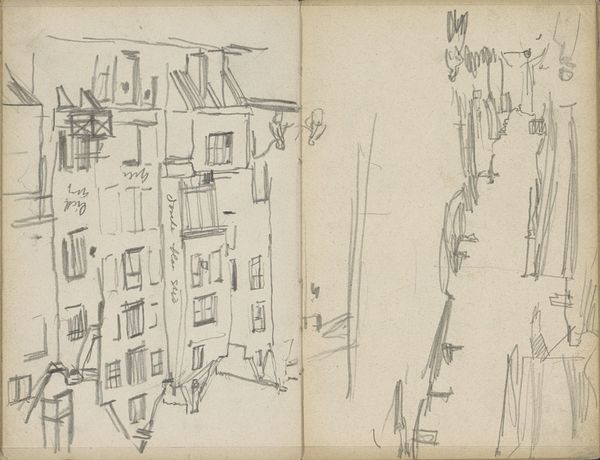
Gezicht op huizen aan de Overtoom te Amsterdam ter hoogte van de Vondelstraat 1907
0:00
0:00
georgehendrikbreitner
Rijksmuseum
Copyright: Rijks Museum: Open Domain
Curator: Oh, this is intriguing. "View of Houses on the Overtoom in Amsterdam near the Vondelstraat," created around 1907 by George Hendrik Breitner. Look closely; it seems to be pencil or pen on paper, likely from a sketchbook. Editor: There's something very immediate about it, isn’t there? Almost like catching a fleeting thought, a half-remembered dream of the city. All those layered lines give it a real sense of bustling energy. Curator: Exactly. Breitner was fascinated with capturing the everyday life of Amsterdam. You can almost feel him there, sketchbook in hand, documenting the urban landscape and the architectural structures in rapid strokes. Think of the materials accessible to him: mass-produced sketchbooks, readily available pencils. It democratized artmaking in a sense. Editor: It also feels oddly melancholy to me, that sense of immediacy combined with the knowledge that those specific houses, that specific view, has probably vanished in the mists of time. It’s like a whisper from the past. I also love that this is probably a page in a sketchbook. Imagine him pausing at that specific spot to quickly capture it. The buildings on the left page are very pronounced but on the right, there is a less clear sketch of something that could also be buildings but far fainter. Curator: That ties into Breitner's artistic practice. He favored sketching as a primary tool for understanding his environment, before perhaps translating it into a more "finished" painting or photograph. He captured that fleeting, momentary lived experiences of urban life and the material surroundings which shaped them. Editor: There's a certain charm in that roughness, a kind of unpolished truth. It feels almost anti-monumental. What’s more raw and fundamental than a sketch? Curator: Agreed. In his approach, the division between "high art" and everyday observation blurs. The sketchbook itself becomes an artifact of labor, a testament to artistic exploration and experimentation. Editor: A tangible manifestation of an idea taking form...almost seeing an artist think through images, isn't that what sketchbooks are all about? I wonder what stories those buildings held. Curator: Indeed. And looking at it now, over a century later, it provides us with an insightful look into both Breitner’s process, as well as urban life in Amsterdam during that time, a place of transition and ever-evolving landscapes, rendered simply in graphite and paper. Editor: Beautiful. Makes you want to grab a sketchbook yourself and find a forgotten corner to document, doesn't it?
Comments
No comments
Be the first to comment and join the conversation on the ultimate creative platform.
